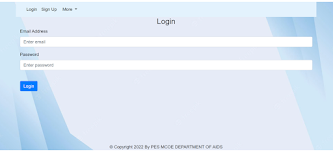Covid Face Mask Detection.
Developers :-
- Webcam
- Arduino Nano R3
- LED
- Buzzer
- Python 3.10.0
- TensorFlow
- OpenCV
- Arduino IDE
- Jupyter Notebook
In training phase we are finding training loss and accuracy of our model by using dataset with mask and without mask. After completing our training model we will able to see our model accuracy trough graph chart.
Deep Learning consists of a very enormous number of neural networks that use the multiple cores of a process of a computer and video processing cards to manage the neural network’s neuron which is categorized as a single node. Deep learning is used in numerous applications because of its popularity especially in the field of medicine and agriculture.
Here, you will create a face recognition algorithm that will be able to detect facemasks on people's faces using the trained model in the previous step. if you don't have the GPU power or the needed dependencies or knowledge to work with neural network models. I have included my pre-trained model that can be used in this step without going by step 1. name of the model fil: mask_detector.model.
Step-3 :-
Finally, you will add a simple Serial Command to the facemask detection algorithm that will order the Arduino to switch LED and Buzzer on or off based on the state of detection.
- Save lives.
- Be safe from spreading.
- Firstly, the proposed technique can be integrated into any high-resolution video surveillance devices and not limited to mask detection only. Secondly, the model can be extended to detect facial landmarks with a facemask for biometric purposes.
- Also, in future we will able find maximum and minimum those faces will wearing mask and without mask and sending mail to that authorized person i.e.– Manager, Boss , CEO , MD.
- A. Das, M. Wasif Ansari and R. Basak, (2020) "Covid-19 Face Mask Detection Using TensorFlow, Keras and OpenCV," 2020 IEEE 17th India Council International Conference (INDICON), New Delhi, India, pp. 1-5.
- M. Loey, G. Manogaran, M. H. N. Taha, and N. E. M. Khalifa, “A hybrid deep transfer learning model with machine learning methods for face mask detection in the era of the COVID-19 pandemic,” Measurement, vol. 167, Article ID 108288, 2021.
- M. Loey, G. Manogaran, M. H. N. Taha, and N. E. M. Khalifa, “A hybrid deep transfer learning model with machine learning methods for face mask detection in the era of the COVID-19 pandemic,” Measurement, vol. 167, Article ID 108288, 2021.
- Liu, C., and Wechsler, H. (2002). Gabor feature-based classification using the enhanced fisher linear discriminant model for face recognition. IEEE Transactions on Image processing, 11(4), 467-476.
- Liu, C., and Wechsler, H. (2002). Gabor feature-based classification using the enhanced fisher linear discriminant model for face recognition. IEEE Transactions on Image processing, 11(4), 467-476.







Comments
Post a Comment